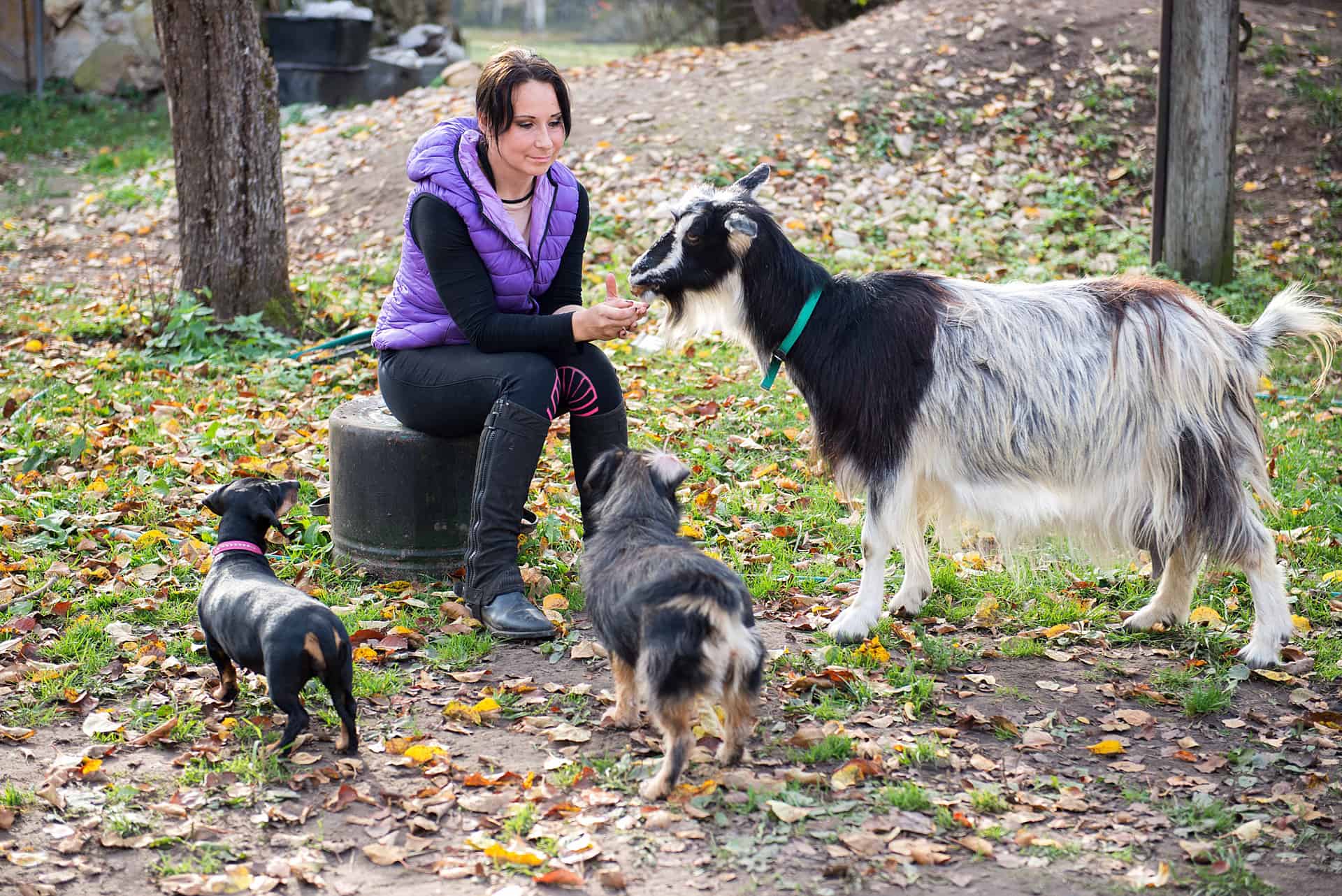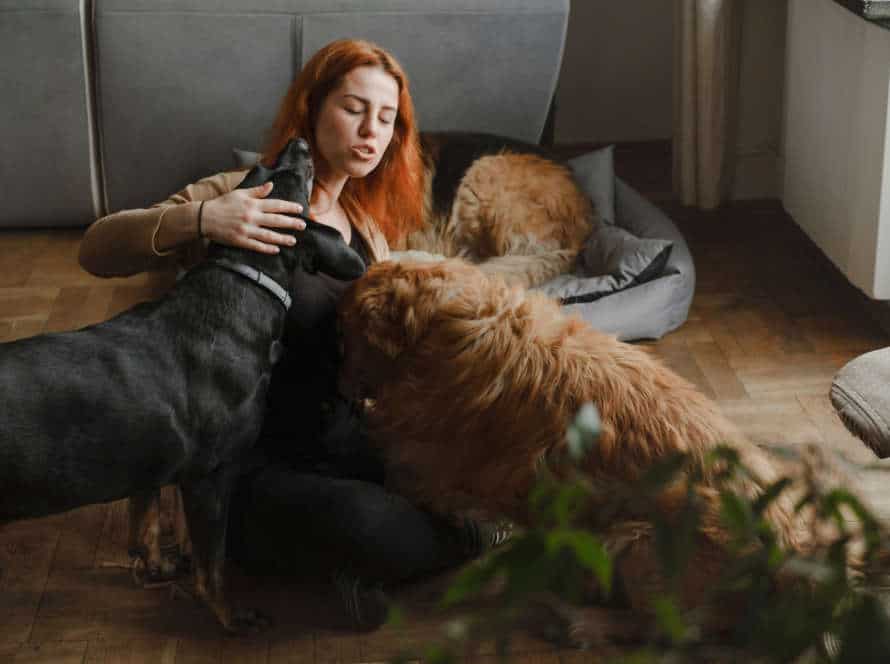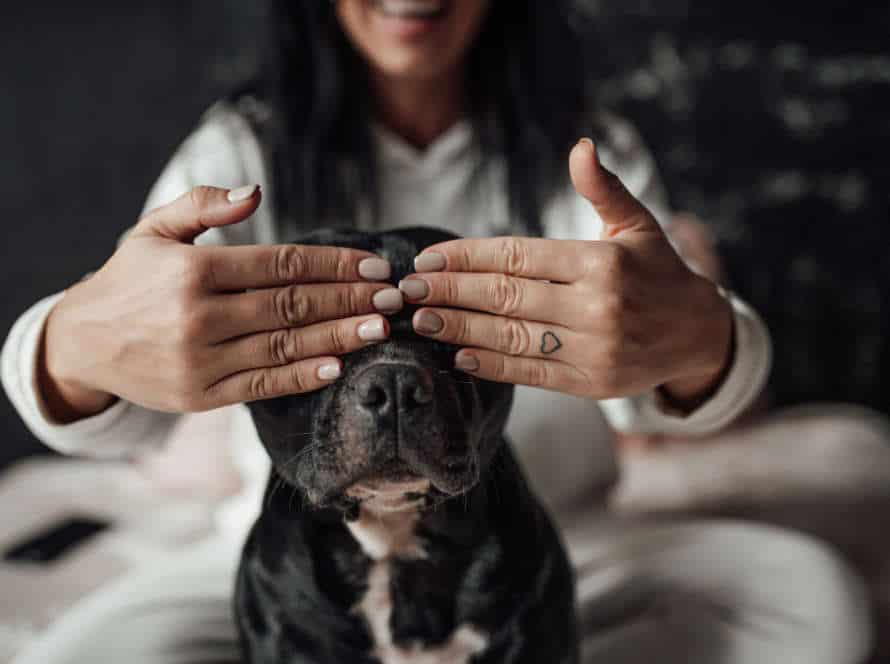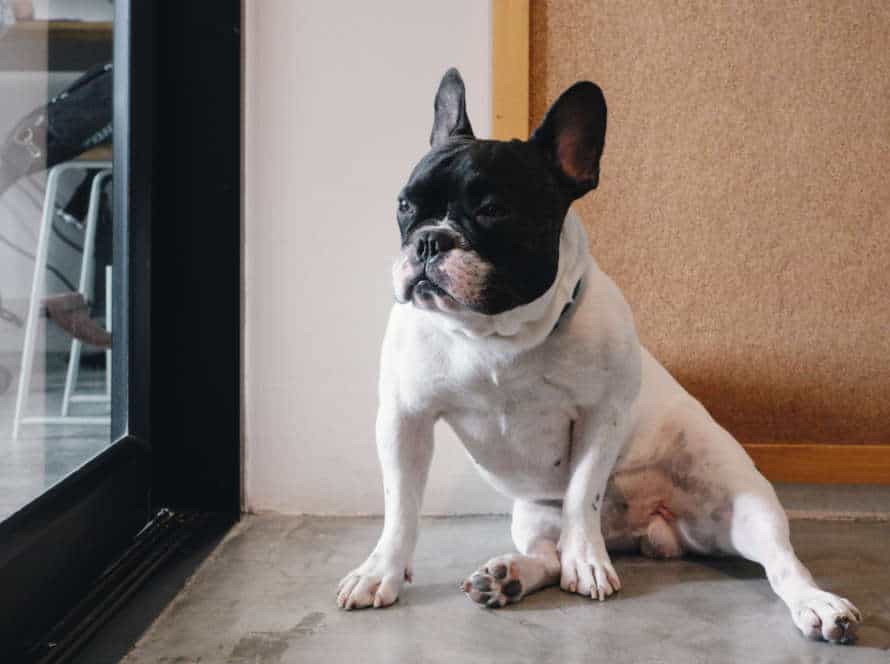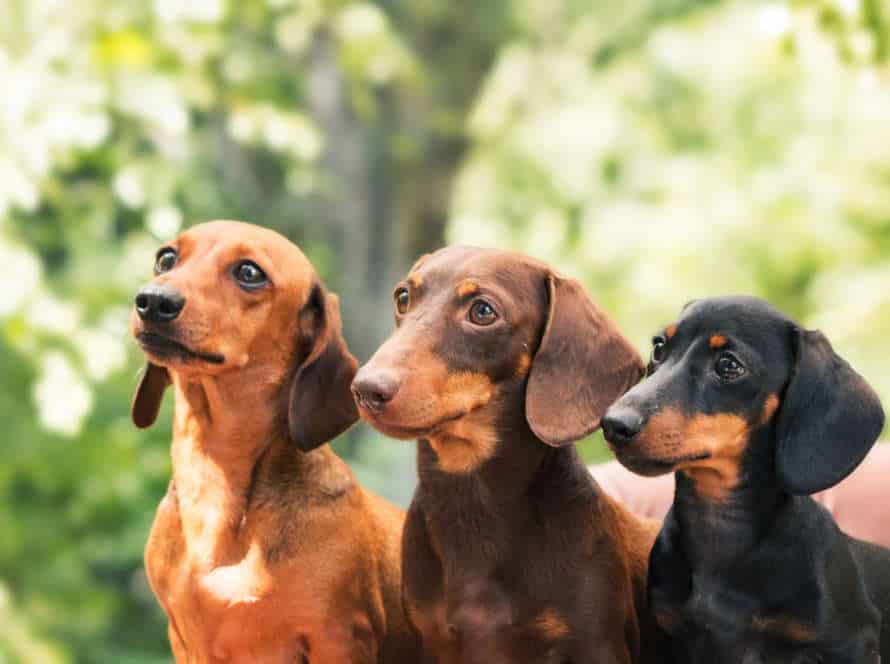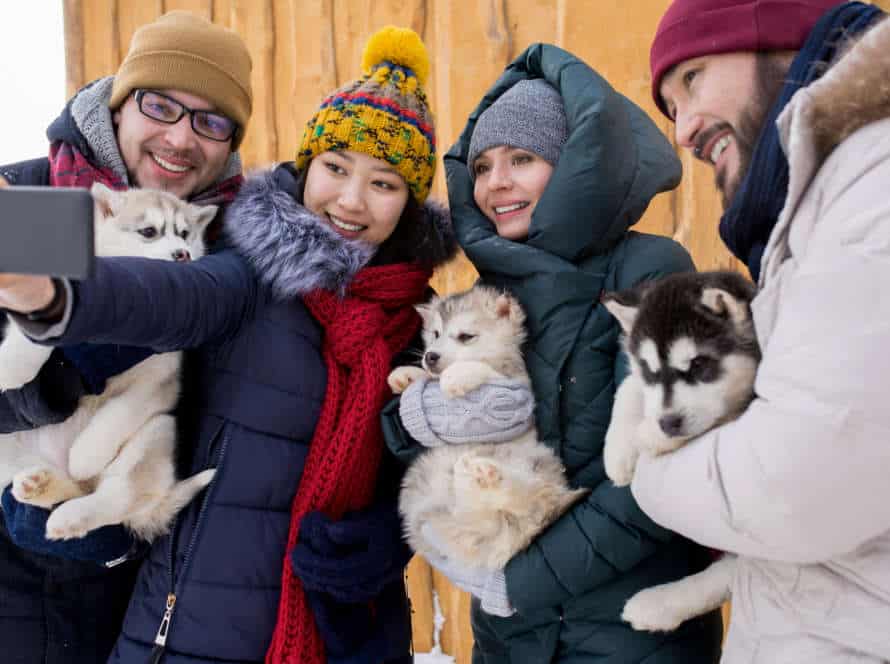Why Teaching Sharing to Dogs is Important
Owning a pet dog is great, and teaching it to share is essential. This helps build a stronger connection between you and your pup, and also prevents potential behavioral issues. Moreover, it can help your pooch develop healthy social skills, boost confidence, and become a more dependable pet. Let’s take a look at why teaching your dog to share is so important, and how to do it.
Benefits of Sharing for Dogs
Sharing is a key part of any dog’s socialization and training. It can have many benefits!
- Socialization: Your pup will better understand other dogs and people.
- Trust: Your pup will learn to trust you and your commands.
- Less Aggression: This will help stop aggressive behavior in your pup.
- Generosity: Sharing encourages generous and caring behavior.
- Bonding: Playing together, sharing treats, cuddling; all builds the bond between you and your pup.
Tip: Get sharing exercises going early and reward your pup with treats or love when they share their toys or food.
Negative Consequences of Non-Sharing Behavior
Failure to teach sharing to dogs can lead to negative outcomes. Dogs, being social animals, must learn how to share and be generous. These consequences include:
- Aggression with other dogs and humans.
- Territoriality and insecurity.
- Poor socialization with other dogs and people.
Teaching a dog to share is a key part of their training and socialization. Positive reinforcement and rewards-based training are useful methods to encourage generous behavior. Plus, dogs are more likely to share when they have positive associations with it; so reward your pup for their generosity!
Role of Pet Owners in Encouraging Sharing
As pet owners, we have an important role to play in teaching our pooches how to share and promote generous behavior. Teaching your pup to share is significant ’cause it helps them gain social expertise and proper habits. Here are some tips to foster sharing in your pup:
- Start with basic commands like “drop it” or “leave it” when playing with toys or treats.
- Reward your dog when they share with you or other dogs using positive reinforcement.
- Practice sharing meals by giving your dog food with others or letting other dogs eat from the same bowl.
- Socialize your pup by taking them to dog parks, playdates, or dog training classes.
- Remember that patience is vital when instructing your pup to share. With steady training and positive reinforcement, your pup will learn to share and build social skills which will benefit them for life.
Understanding Your Dog’s Personality for Sharing
Teaching your pup to share can be an enjoyable experience! Knowing your dog’s character can help you come up with the right techniques to promote generous and sharing behaviors. Get to know your dog’s temperament and activities. This will help you pick out the most efficient way to teach your dog to share.
Identifying Your Dog’s Temperament
Identifying your pup’s temperament? Observe how they act in different scenarios, with people and other doggos. Plus, their response to new things. Here’s some common personalities:
- Dominant: Confident, assertive, and could be aggressive to others.
- Submissive: Shy, reticent, and withdrawn. Ears down around other dogs.
- Happy: Outgoing, sociable, and cheerful. Friendly and seeks interaction.
- Territorial: Protective of home and family. Bark or growl at strangers. Could be aggressive if they sense danger.
- Anxious: Nervous behavior like pacing, panting, whimpering, and hiding. Fearful of new stuff or loud noises.
By knowing your pup’s personality, you can better train and socialize them. This helps with good behavior and interaction with other humans and doggos.
Training Tips for Altruistic Dogs
Training your pup to be generous can be a satisfying experience. Knowing their personality is key to teaching them to share and do nice things. Here are some tips:
- Establish a positive, rewarding feeding program where your pooch has to share and wait for you to give permission to eat.
- Stimulate your dog to play with other dogs or people and reward sharing.
- Use treats, praise and petting to reward good behavior and discourage bad.
- Be patient, consistent and kind during the training. Every pup is different.
With enough practice, your dog can become a giving part of your home.
Training Tips for Possessive Dogs
Possessive behavior in dogs can be a challenge. But with the right training, it can be managed. To encourage generous behavior in your pup, understand its personality. Here are tips for training a possessive dog:
- Start with Sit-Stay Training: Teach your dog to stay calm near food, bed, and toys. Begin with simple sit-stay and build up gradually.
- Use Treats and Positive Reinforcement: Reward good behavior with treats and praise. Offer a special treat when sharing.
- Be Consistent: Have consistent expectations and training techniques. This helps your pup understand what you expect and what’s not acceptable.
- Remember: Every dog has a unique personality. With patience, consistency and positive reinforcement, even a possessive dog can learn to share.
Teaching Your Dog to Share
Teaching your pooch to share? It’s great! This teaches generosity and better coexistence with other animals or people. Plus, it boosts social interaction and cuts down conflict in multi-pet households. What methods and techniques can help your dog learn to share? Find out in this article!
Useful Commands for Encouraging Sharing
Teaching your pup to share is a must! There are commands to help.
- “Give:” Offer a toy or treat and say “give.” Reward pup when they let go. Repeat this until they understand the command.
- “Leave it:” Place an item on the ground and say “leave it.” Give pup a treat if they ignore the item. Do this with various items.
- “Take it:” When offering treats or toys say “take it.” Praise pup if they take it correctly.
Consistent training will help pup learn to share.
Using Positive Reinforcement to Promote Sharing
Positive reinforcement is a strong tool for teaching your pup to give their playthings, food and space to other pups and people. Here’s how to use it in order to promote generosity in your pup:
- Show your pup what you want them to do. For example, if you want them to share their toy, show them how by giving them one of yours or a treat.
- Praise or reward your pup for sharing. Use treats, compliments or their favorite toy to reward them whenever they share their toys or food with others.
- Make it a fun time. Make the experience enjoyable by including toys and treats that they love.
Consistency is key in teaching your pup to share. With patience, commitment and positive reinforcement, you can help your pup be a more generous and friendly companion.
Using Socialization Techniques to Teach Sharing
Training your pup to share is a must! Socialization is a good way to get them to do it. Here are some tips:
- Teach the “drop it” command. Start with a treat or toy and then increase distractions.
- Positive reinforcement. Give them treats, praise and love when they share. Put sharing in your dog’s normal training routine.
- Encourage socialization. Let your pup meet other dogs & people. Reward them for being nice.
Patience and consistency are key. Make sure training stays fun and positive to keep your dog interested.
Encouraging Generosity Through Playtime
To help your pup be generous, commit to teaching them. Sharing is something they learn. Patience, consistency and dedication are needed. Positive reinforcement is the key for success.
Playtime activities will help them learn to share. Let’s discover how playtime can encourage generous behavior in your pup.
Choosing the Right Toys for Sharing Practice
Discovering the correct toys for sharing with your pup is a must for encouraging nice behavior during play. Here are some hints for finding the right toys:
- Go for toys that are easy to hold and play with – like balls, ropes, and stuffed toys.
- Make sure the toys are durable and made of non-toxic materials for your dog’s safety.
- Pick toys that two dogs can share, e.g. tug ropes or balls.
- Avoid toys that make your pup possessive, like single chew toys and rawhides.
By selecting the right toys for sharing, you can help teach your pup kindness and have fun at the same time!
Supervising Playtime to Encourage Sharing
Supervise your pup’s playtime – it’s a great way to show your furry friend how to share and act nicely. Here are some tips:
- Supervise the playtime with other dogs.
- Set clear rules, like no growling or biting.
- Give treats or praise when good behavior is shown.
- Intervene if the rules are not followed. Provide guidance on how to act.
By supervising and encouraging generous behavior, your pup will become an awesome playmate and socialize better with doggy pals.
Pro Tip: Always supervise and give positive reinforcement!
Encouraging Cooperative Play with Other Dogs
Teach your pup to share and foster cooperation with other canines! Here are some tips for helping them be generous during play:
- Begin with a buddy they know: Introduce your dog to another pup they recognize. It’ll make them feel relaxed and comfortable.
- Positive reinforcement: Offer treats, compliments and love when they share toys willingly.
- Loads of toys: Have plenty of toys lying around to avoid resource guarding and boost sharing. Start by giving each pup their own toy, then swap them.
- Allow natural dog behavior: Growling, chasing and play-biting are standard during playtime. Let them happen, just not aggressively or dangerously.
- Monitor the fun: Watch your pup’s play to make sure they act appropriately and avoid conflicts.
Pro tip: Consistent rewards and supervision of playtime are key for teaching your dog good socialization skills.
Overcoming Common Challenges in Teaching Sharing
Teaching your pup to share can be difficult. Patience, consistency and understanding are needed. Give them time to get used to it, and reward them for good behaviour. Knowing the common challenges is key. Here are some of the main ones you can expect:
Addressing Resource Guarding Behaviors
Resource guarding in dogs may be difficult to manage, however with patience and suitable training, it is possible to conquer it and inspire generous behavior. Here’s how to handle it:
- Begin with low-value items, such as toys or treats, that your dog is less likely to protect.
- Utilize positive reinforcement tactics, such as offering your pup a high-value treat when they give up an item without displaying aggression.
- Step by step increase the value of the item and reinforce positive conduct.
- Refrain from punishing your pup for resource guarding as this can intensify their anxiety and worsen the behaviour.
By using these techniques, you can teach your pup to share and overcome resource guarding. Pro-tip: For tailored guidance and assistance in addressing resource guarding, consult with a professional dog trainer or behaviourist.
Dealing with Food Aggression
Dealing with food aggression in dogs? A challenge! But, with diligence and persistence, it can be conquered. Here are some tips to help your pup share and act generously:
- Start with small snacks – Instead of one big bowl of food, give little treats one at a time. Reward for calm and patient behavior.
- Employ positive reinforcement – Whenever your dog acts generous, give them treats or praise. This will support them to keep doing it.
- Gradually add more – As your pup gets used to sharing, add more food, in small steps.
- Get professional help – If the food aggression is serious or continual, it’s essential to get assistance from a professional dog trainer or expert who can examine the situation and provide personalized advice for taking care of the behavior.
Consistent effort and a positive attitude can help your dog beat food aggression and motivate them to be generous.
Overcoming Jealousy and Sibling Rivalry
To overcome jealousy and rivalry, teach sharing and train your dog to share. Allow each child or pup to have their own space and toys. Also, provide opportunities for fun and problem-solving. When successful sharing occurs, give praise and rewards.
Set boundaries around food and toys for your dog. Use positive reinforcement to encourage generous behavior. Teach your dog the “leave it” or “give” command, so they release any object on command.
Consistency and patience are needed. The more attention and rewards given, the better the results will be.
Conclusion and Final Tips for Pet Owners
Teaching your pup to share is crucial for a strong bond between pet and human. Patience and consistency are vital for success. Here are some last tips to bring out the best in your pooch!
Recap of Key Takeaways
To sum up, teaching your pup to share is an important part of being a dutiful pet owner. Here’s what you need to know:
- Start training your dog to share while they’re young. Consistency is vital.
- Use rewards like treats and kind words to motivate them to share.
- Make sure your dog has enough toys and stuff to give away.
- Show them how it’s done, by giving away your things and theirs.
- Be kind and understanding, as it could take time to learn.
Pro Tip: Teaching your pup to share can be a lot of fun! Just bear in mind that it’s a process that takes patience, consistency and positive reinforcement. Keep up the good work, and soon your dog will be a sharing, generous friend.
Final Tips for Encouraging Sharing in Your Dog
Summing up, teaching your pup to share is a must. Here are some tips to make it happen:
- Practice with toys. Start by showing your pup how to share toys. Give praise and rewards when your pup does well.
- Regular training. Stick to a schedule of training sessions. This will help your pup learn the behavior.
- Multiple dogs? Provide enough toys and attention for each one.
- Keep them engaged. Physical and mental exercise will help keep your pup content.
- Be patient. It might take some time for your pup to get it. Don’t give up!
By following these steps, you can help your dog become a generous and loving companion!
Frequently Asked Questions
1. How do I teach my dog to share his toys with other dogs?
To encourage your dog’s generous behavior, start by offering him a toy and playing with him. After a few minutes, invite another dog over to play with your dog. Encourage your dog to share his toy with the other dog by speaking positively and reinforcing good behavior. Initially, you may need to help by guiding the toy towards the other dog, but eventually, your dog will learn to share his toys on his own.
2. Why is it important to teach my dog to share?
Teaching your dog to share is important because it helps them build social and communication skills. Sharing also reduces aggression and dominance, making for a more peaceful and happy pack environment. Dogs who learn to share their toys, space, and time with their owners and other pets are much more pleasant to be around and are easier to manage.
3. Can I teach my adult dog to share?
Yes, you can teach an adult dog to share, but it may take more time and patience than training a young puppy. When introducing an adult dog to the concept of sharing, try to create a positive and relaxed atmosphere. Start by playing with your dog one-on-one and eventually work up to introducing another dog into the mix. If your adult dog has any history of aggression or possessiveness, it is important to work with a professional dog trainer on this behavior.
4. Is it normal for dogs to be possessive of their toys?
Yes, it is normal for dogs to be possessive of their toys, especially if they are new or cherished. However, it is important to teach your dog to share and to help break any potential possessive behavior. This will help reduce aggression and anxiety in your pet and promote a more harmonious relationship between pets and owners.
5. How can I encourage my dog to share his food?
To encourage your dog to share his food, start by feeding him in a separate area away from other pets. While he is eating, offer treats to other pets nearby. This will help your dog associate the presence of other animals with positive experiences. Over time, you can slowly move your dog’s food bowl closer to other pets until he learns to eat peacefully and share. Remember to always reinforce good behavior and avoid punishment or negative reinforcement.
6. What should I do if my dog is being too possessive or aggressive?
If your dog is showing aggressive or possessive behavior, it is important to seek the help of a professional dog trainer. They can help identify the cause of the behavior and provide strategies to help train your dog to share and communicate appropriately with other pets. Additionally, you may need to re-evaluate your own training and behavior to identify any potential triggers or reinforcement of negative behavior.

